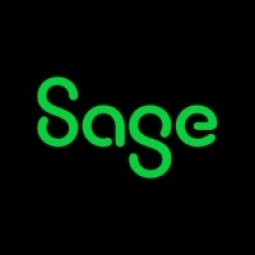公司规模
Large Corporate
地区
- America
国家
- United States
产品
- Sage 100 ERP
- Sage 100 Advanced ERP
- Visual Integrator module
技术栈
- T1 wide-area network
- Thin-client architecture
实施规模
- Enterprise-wide Deployment
影响指标
- Productivity Improvements
- Cost Savings
技术
- 应用基础设施与中间件 - API 集成与管理
适用行业
- 食品与饮料
适用功能
- 商业运营
用例
- 库存管理
- 供应链可见性(SCV)
服务
- 系统集成
- 软件设计与工程服务
关于客户
Yard House Restaurants 是一家高档餐厅连锁店,于 1996 年在加州长滩海滨开设了第一家餐厅。该公司以其美味的食物、经典摇滚和世界上最大的生啤酒选择而闻名。它已经发展到拥有 9 家餐厅,并于 2002 年被《国家餐厅新闻》评为热门概念。该公司提供多达 250 种桶装啤酒,并提供各种菜单,包括牙买加烤鸡翅、凯撒沙拉配烤金枪鱼和热巧克力蛋奶酥。该公司拥有 2,500 多名员工和 7 家分店。
挑战
Yard House Restaurants 是一家高档连锁餐厅,由于扩张速度过快,面临着诸多挑战。当公司扩张到第二家餐厅时,原来的 QuickBooks 套件已经无法满足其业务需求。业务变得更加分散,IT 员工很难在多个州的偏远地区建立和维护业务系统。该公司需要一种能够满足其不断增长的需求并对其业务进行集中控制的解决方案。
解决方案
Yard House Restaurants 经过仔细的选择过程,选择了 Sage 100 Standard ERP 软件作为其端到端业务系统,因为它具有灵活性、可靠性和深刻的报告功能。随着业务变得更加分散,该公司升级到 Sage 100 Advanced ERP 以利用其增强的 LAN 功能。这使该公司能够通过 T1 线路运行其系统,提供从总部到企业中任何站点的点对点连接。该公司还利用 Visual Integrator 模块将销售、人工和库存资金直接发布到 Sage 100 ERP,使其能够简化会计和 IT 流程并实现令人难以置信的效率。
运营影响

Case Study missing?
Start adding your own!
Register with your work email and create a new case study profile for your business.
相关案例.

Case Study
The Kellogg Company
Kellogg keeps a close eye on its trade spend, analyzing large volumes of data and running complex simulations to predict which promotional activities will be the most effective. Kellogg needed to decrease the trade spend but its traditional relational database on premises could not keep up with the pace of demand.

Case Study
HEINEKEN Uses the Cloud to Reach 10.5 Million Consumers
For 2012 campaign, the Bond promotion, it planned to launch the campaign at the same time everywhere on the planet. That created unprecedented challenges for HEINEKEN—nowhere more so than in its technology operation. The primary digital content for the campaign was a 100-megabyte movie that had to play flawlessly for millions of viewers worldwide. After all, Bond never fails. No one was going to tolerate a technology failure that might bruise his brand.Previously, HEINEKEN had supported digital media at its outsourced datacenter. But that datacenter lacked the computing resources HEINEKEN needed, and building them—especially to support peak traffic that would total millions of simultaneous hits—would have been both time-consuming and expensive. Nor would it have provided the geographic reach that HEINEKEN needed to minimize latency worldwide.

Case Study
Energy Management System at Sugar Industry
The company wanted to use the information from the system to claim under the renewable energy certificate scheme. The benefit to the company under the renewable energy certificates is Rs 75 million a year. To enable the above, an end-to-end solution for load monitoring, consumption monitoring, online data monitoring, automatic meter data acquisition which can be exported to SAP and other applications is required.

Case Study
Coca Cola Swaziland Conco Case Study
Coco Cola Swaziland, South Africa would like to find a solution that would enable the following results: - Reduce energy consumption by 20% in one year. - Formulate a series of strategic initiatives that would enlist the commitment of corporate management and create employee awareness while helping meet departmental targets and investing in tools that assist with energy management. - Formulate a series of tactical initiatives that would optimize energy usage on the shop floor. These would include charging forklifts and running cold rooms only during off-peak periods, running the dust extractors only during working hours and basing lights and air-conditioning on someone’s presence. - Increase visibility into the factory and other processes. - Enable limited, non-intrusive control functions for certain processes.

Case Study
Temperature Monitoring for Restaurant Food Storage
When it came to implementing a solution, Mr. Nesbitt had an idea of what functionality that he wanted. Although not mandated by Health Canada, Mr. Nesbitt wanted to ensure quality control issues met the highest possible standards as part of his commitment to top-of-class food services. This wish list included an easy-to use temperature-monitoring system that could provide a visible display of the temperatures of all of his refrigerators and freezers, including historical information so that he could review the performance of his equipment. It also had to provide alert notification (but email alerts and SMS text message alerts) to alert key staff in the event that a cooling system was exceeding pre-set warning limits.

Case Study
Coca-Cola Refreshments, U.S.
Coca-Cola Refreshments owns and manages Coca-Cola branded refrigerators in retail establishments. Legacy systems were used to locate equipment information by logging onto multiple servers which took up to 8 hours to update information on 30-40 units. The company had no overall visibility into equipment status or maintenance history.



